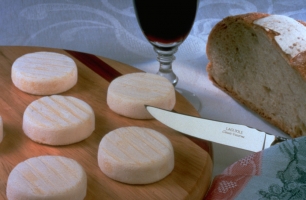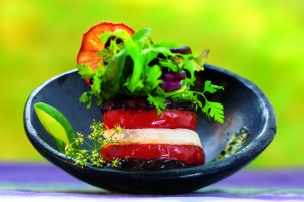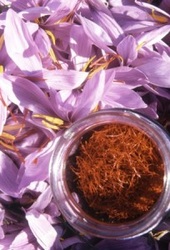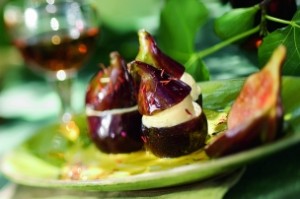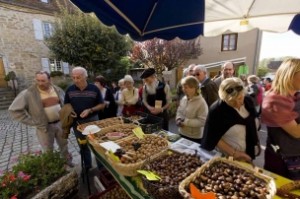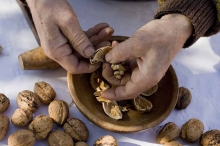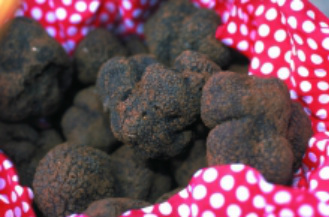
The region is renowned for its foie gras, truffles, saffron and walnuts. Duck dishes, such as magrets de canard (duck breast) or confit de canard (duck simmered and then preserved in its own fat) appear frequently on local menus, as do salads with warmed cabecou cheese and Quercy lamb.
Truffles are considered the “Black Diamonds” of France.
Truffles are considered the “Black Diamonds” of France.
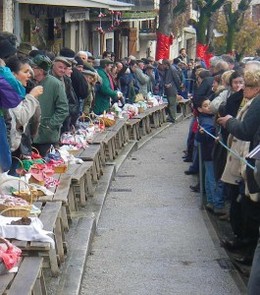
The largest truffle market
in SW France is 20 miles away
in a traditional open-air market in
Lalbenque. Held every Tuesday
between December 1st and
March 31st, it is quite a scene
complete with strolling gendarmes
and much secrecy.
Warm rounds of soft, goats’ milk cheese called “Cabecou” are often used to make a delicious salad, one of the region's specialties. The chef places the cheese on top of soft, organic, field greens which are dressed with vinaigrette, then drizzles honey a tiny bit of over the cheese.
You can buy Cabecou in any market and make the same salad yourself… or spread the mild white cheese on warm bread, instead of butter. It also can be used as shown below, with roasted eggplant, peppers and arugla.
You can buy Cabecou in any market and make the same salad yourself… or spread the mild white cheese on warm bread, instead of butter. It also can be used as shown below, with roasted eggplant, peppers and arugla.
Saffron’s aroma is often described by connoisseurs as reminiscent of metallic honey with grassy or hay-like notes, while its taste has also been noted as hay-like and sweet. Saffron also contributes a luminous yellow-orange colouring to foods.
It is the most priceless spice in the world, as each thread must be hand harvested from the crocus flower and each flower only contains a few threads. The saffron produced in SW France is considered of a “boutique variety.” Often used to flavor rice, the spice is shown below with regional figs.
It is the most priceless spice in the world, as each thread must be hand harvested from the crocus flower and each flower only contains a few threads. The saffron produced in SW France is considered of a “boutique variety.” Often used to flavor rice, the spice is shown below with regional figs.
Walnuts abound in every menu. Vin de Noix or walnut liqueur is part of the famous, often homeade, aperitif called Fenelon (made with Cahors wine, and equal parts of Creme de Cassis and Vin de Noix added). After mixing, it must laid down to rest for a year or so. You will be able to find it, and the base to make it, for sale in the Musee du Vin. Ask Emilie.
